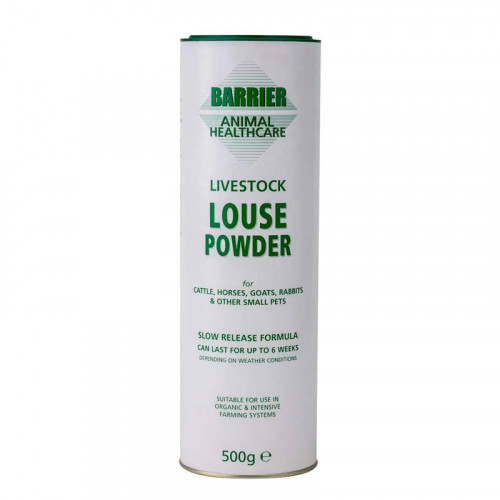There are only three types of lice that seem to affect horses. One is the Sucking Louse - Haematopinus asini, which can usually be found around the base of the mane and tail. The other two species are Biting lice and closely related - pilosus and Damalinia equi. All of them cause poorness of condition, itching and loss of hair. Battles unique formulation of Livestock Louse Powder contains a safe-carrier that does not cause carcinogenic effects. Designed to be applied directly to all animals it is suitable for use in organic farming systems, as it falls into the exempt category of products which use only plant oils as active ingredients, as listed in Annexe IIB (Pesticides) of Council Regulation (EEC) No 2092/91 (as amended). Lice can usually be found on the neck, shoulders, along the spine and under the base of the tail, however, the entire body can be affected in heavy infestations. These small wingless insects are present all year round and especially noticeable amongst housed animals from the end of autumn through winter to spring. Because of its contagious nature, louse infestation spreads most rapidly when animals are in close contact. The life cycle is complete within three to four weeks. A female louse lays around 50 to 100 eggs (nits), which she attaches to the hair fibres. They hatch into nymphs after about ten days and develop into adults after a further two to three weeks - although human lice have been known to mature within eight days of hatching. It is just possible to see adult lice with the naked eye. By carefully parting the hair, movement can normally be seen at the base of the hair. They are grey/brownish/yellow in colour and the size of a pinhead. Biting lice are by far the most common, they tend to be smaller than a blood sucking louse - the largest of species would be about 1cm long although most are about half this size. Biting lice can't suck blood and can be more easily identified by their blunt head. They are slow moving and can be easily overlooked. They feed on particles of skin, fur, and feathers and their scavenging produces intense irritation causing crusty, scurfy areas that the animal will bite and scratch in an effort to alleviate their discomfort. An infected animal often takes on a motheaten appearance. Biting lice do not affect humans. Blood-sucking Lice are larger than biting lice, they have a narrow head with reduced eyes and shorter antennae. The mouthpart is modified for blood-sucking and retractable into the head when not in use. They feed on blood by piercing the skin with their mouth. They can cause severe anaemia and infested animals can rapidly lose weight and become prone to other illnesses. Lice will breed in straw, particularly barley straw so it is essential that where there is a lice infestation, bedding of this nature is treated or destroyed.
Average Rating
0 Reviews
No reviews yet
Write a Review
You must be signed in to leave a review.
Write a Review
Brand
- Barrier Healthcare
Filter By Category
- Horsecare
Weight
- 0.5kg







